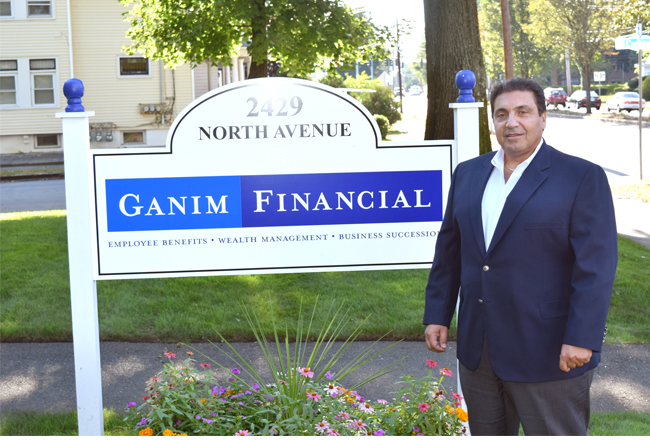To financial adviser and wealth management planner Lawrence Ganim, the greatest challenge faced by entrepreneurs is not getting their businesses up and running, but what to do when the time comes to step away from the controls.

“I”™ve been working for entrepreneurs for over 30 years and I”™ve never had an occasion where I met a successful entrepreneur who had everything buttoned up,” said Ganim, president of Ganim Financial in Bridgeport. “You might be very good at creating wealth and running a business, but you can”™t be great in everything. We need to rely on other people.”
Ganim addressed the challenges facing business owners at the end of their
professional road in his first book, “Designed Destinations: Entrepreneurs Guide to a Successful Business Sale or Transfer.” He said the primary mistake that business owners make is not seeing the big picture when stepping away from their business
“They do a lot of things in piecemeal. They will talk to their attorneys and get wills and trusts put into place. Or they will talk to their CPA on another piece about getting something done. So, they wind up having a patchwork of planning,” he said. “They”™re under the impression that they have it all together, but there”™s nothing coordinated, no clear vision of how they want things to be in the future.”
Ideally, the business owner would have begun retirement and succession planning at least 10 years prior to leaving the helm, Ganim said.
“First, start out with a vision. What is your ultimate objective for the business? When do you want to get to the point that you can step back completely or reduce your involvement? And what kind of income do you need to sustain the lifestyle you’ve become accustomed to?”
To answer those questions, said Ganim, one needs to have an accurate valuation of the business”™ worth, as well as a determination on whether the best solution would be the sale of the operation to a third party or an internal transfer involving family or key employees.
The question of business taxes also must be addressed before a transfer of ownership, he said. “A lot of successful people are surprised to find out that about 40 to almost 50 percent of assets they have on the side isn”™t theirs,” he said. “It belongs to the government, unless they do proper planning.”
Too many entrepreneurs are unrealistic as to where their retirement funding will come from, Ganim said. “Most business owners”™ largest asset is their business and they are relying on that asset for their retirement,” he said. “I don”™t want them totally reliant on that asset. I want that asset to become frosting on the cake and have them walk away, if they need to, with financial independence.”
He recommended that entrepreneurs work with advisory professionals who are not afraid to raise a red flag and push back with intelligent advice. “Sometimes, the more successful and wealthier people are, they can be a little intimidating to some of their advisers,” he said.
In writing “Designed Destinations,” Ganim said he kept the book”™s length to 160 pages so that it could be read in a single sitting. He ssid several publishing companies expressed interest in the project but wanted a longer text, which he felt would dilute his attempt at a user-friendly guide. Instead, he opted to self-publish via Amazon”™s CreateSpace platform.
“It was a lot easier than I thought it would be,” he said. He plans to launch a website and blog to start an interactive discussion on his book”™s subject with interested entrepreneurs.
While uncertain whether he will pursue a second book, Ganim said the lessons he included in his book helped him recall his own entrepreneurial roots and the unrealistic goals he set when he started his business in 1985.
“I remember the time I said to myself, Boy, when my business grosses $80,000, I”™ve got it made!” he said, and laughed.






















